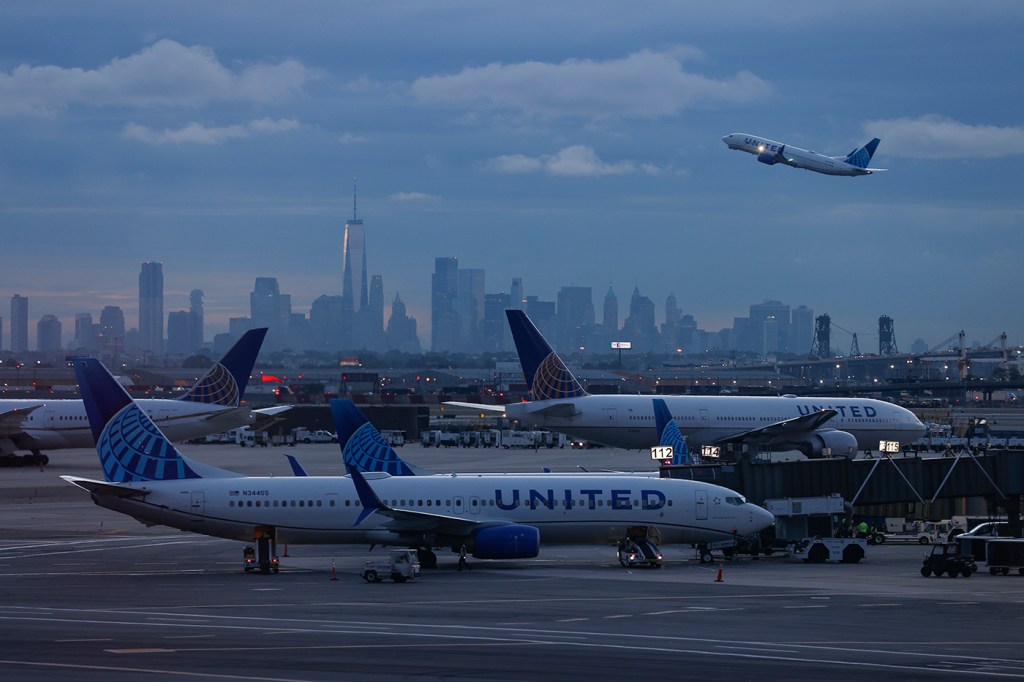How monitoring wastewater from international flights can serve as an early warning system for the next pandemic

Monitoring wastewater from international flights for pathogens would be a useful way to get ahead of the next pandemic or even a biological threat from abroad, scientists say.
Researchers from Northeastern University show how such an early warning system could work in a paper published Feb. 12 in Nature Medicine.
The article on pandemic monitoring says networks of up to 20 “strategically placed” airport sentinel sites in locations including New York, London and Dubai would provide timely situational awareness of respiratory disease outbreaks and shorten the time of first detection of their international dissemination.
“The point is to set up a monitoring system that tells us about the potential introduction of pathogens at a very early stage of an outbreak in the rest of the world,” says Alessandro Vespignani, director of Northeastern’s Network Science Institute and Sternberg Family Distinguished Professor, one of the paper’s co-authors.
“We don’t want to be blindsided by knowing that something bad is happening only when there are already tens of thousands or hundreds of thousands of cases like it was for COVID,” he says.
In that case, it wasn’t until February or March that the U.S. had a good handle on what was happening, Vespignani says. “We were navigating blind.”
“The idea is that you will capture potential genetic traces of pathogens from travelers, especially international travelers,” says Guillaume St-Onge, a physicist and research assistant professor at Northeastern.
“We could have a lead time of about a month or two,” he says.
International flights are good places to test for disease-causing pathogens since hundreds of thousands of people use them daily to travel from one continent to another — and since many of them have to use the bathroom on a long flight, say St-Onge, a co-author on the study.
“The idea is that we build a sentinel system so that we can see when something enters the country,” he says. “It’s not just for pandemics. It’s for any biological threats including those that affect national security.”
“There’s a lot of interesting things that we can get in terms of information about an emerging outbreak that can guide some potential response,” St-Onge says.
He says establishing 10 to 20 sentinel airports appears to be the right scale for developing the network.
Testing 20 to 30% of aircraft arriving at those airports would give “very good results,” Vespignani says. “It would be wonderful to do that for all the aircraft in all airports, but obviously we don’t have the resources for that.”
Metagenomic platforms allow samples to be screened quickly for a large number of pathogens, bacteria and viruses, including those on a “most wanted list,” including H5N1, Vespignani says.
Editor’s Picks
Since liability concerns rule out identifying the airline origin of the wastewater — and since some wastewater might come from centralized tanks at airports — surveillance agents would determine the origin of the pathogen by using a triangulation system that would work somewhat like a CAT scan, Vespignani says.
“After five to 10 detections, we can know the origin. We can know the transmissibility of the virus. We can know the time of the start of the outbreak,” he says.
“We can see if we are observing a signal in New York. If we got a hit in Los Angeles. There are lots of actions you can take if you have situational awareness.”
The sentinel network would have potentially started to detect the SARS-CoV-2 B.1.1.7 variant up to two months before it was actually in the United Kingdom, Vespignani says.
The airport wastewater surveillance would pick up on pathogens carried by asymptomatic travelers as well as those who have recovered from an infection but are still shedding a virus, St-Onge says.
Asymptomatic individuals posed a detection challenge during the COVID pandemic, he says. “We’re not going to catch them through more traditional surveillance systems. So wastewater is a very appealing tool in that context.”
Vespignani says the research from Northeastern can be used by agencies developing surveillance systems, including the U.S. Centers for Disease Control and Prevention. He says tests are also being developed in several other airport hubs in the world.
He says systems also are being developed in Hong Kong, Canada and the U.K.
“What we are providing to them is how to optimize the system,” Vespignani says. “We can optimize this network of sentinels, depending on the problem at hand.”
Surveillance can be turned up in a hot spot or customized by location to look for certain diseases such as mosquito-borne illnesses, St-Onge says. In addition, remote areas without a lot of air travel might benefit from the supplementation of regional surveillance systems when necessary.
If there is a signal from South American you want to understand better, “you activate for a couple of weeks some sentinels there,” Vespignani says. “I think the beauty of these approaches is that in terms of resources it is quite parsimonious.”
“We can get a better understanding of where an epidemic is currently active and where it’s more likely to seed new outbreaks,” St-Onge says.
It would inform public decisions about whether to do interventions such as border closings, or whether it’s too late, or would cause too much economic damage, he says.











